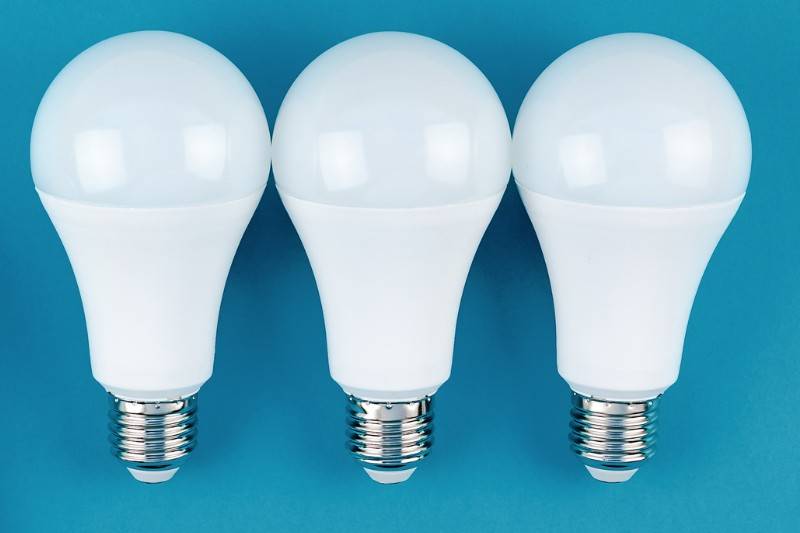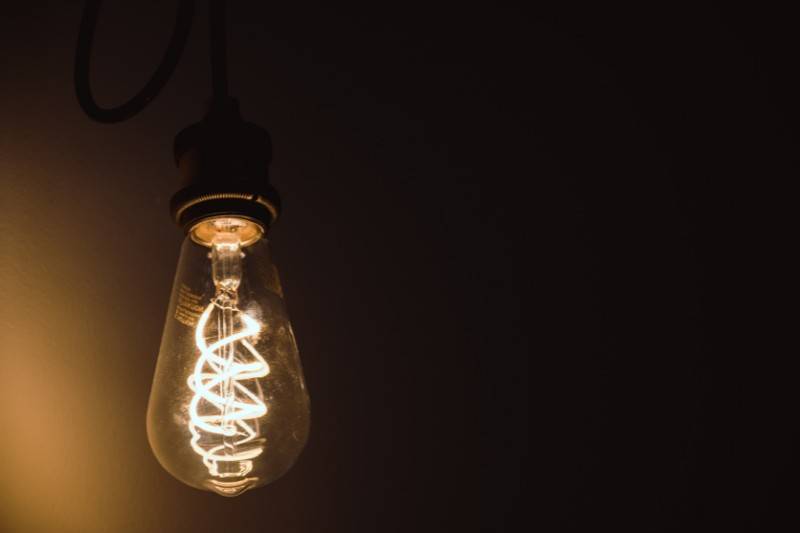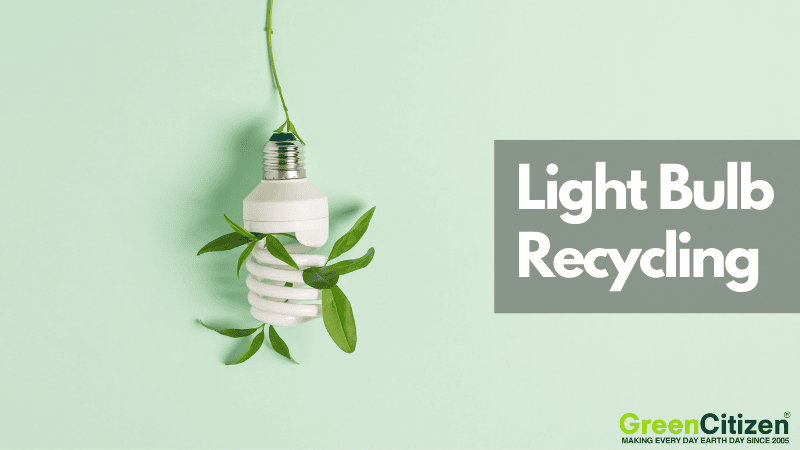Light bulb recycling isn’t just a good idea—it’s essential for protecting the environment and staying compliant with proper disposal laws. Every year, millions of used light bulbs—whether incandescent, CFL, or LED—end up in landfills, where they contribute to toxic waste and environmental harm.
Many light bulbs contain hazardous materials like mercury, lead, and phosphor. Improper disposal can contaminate soil and water, putting ecosystems and public health at risk. That’s why knowing how to dispose of light bulbs safely—and choosing to recycle light bulbs responsibly—matters more than ever.
In this guide, we’ll cover everything you need to know about light bulb recycling. You’ll learn the best disposal methods for different types of bulbs, local recycling options, and why responsible light bulb disposal helps reduce waste and protect our planet.
Key Takeaway: How to Recycle Light Bulbs
To recycle light bulbs safely, use certified recycling centers, retailer take-back programs, or mail-in services. CFLs, LEDs, and incandescent bulbs require different disposal methods. Proper recycling prevents toxic pollution, conserves valuable materials, and keeps hazardous waste out of landfills. Always follow local guidelines for responsible light bulb disposal.
Can You Recycle Light Bulbs?
Yes, you can recycle light bulbs—but how you recycle them depends on the type.
Different light bulbs require different recycling methods because they contain materials like glass, metals, and sometimes hazardous substances such as mercury.
Here’s a quick breakdown:
- Incandescent Bulbs: Can be recycled for their glass and metal, but often not accepted in curbside programs.
- CFL Bulbs (Compact Fluorescent Lamps): Contain mercury and must be handled through specialized recycling programs.
- LED Bulbs: Contain valuable recyclable materials but also hazardous components; require proper e-waste recycling.
Recycling centers separate glass, metal, and toxic materials to ensure safe disposal and recovery. Proper recycling prevents hazardous substances from polluting landfills and helps recover materials for reuse.
How to Recycle Different Types of Light Bulbs

Can You Recycle Incandescent Light Bulbs?
Yes, you can recycle incandescent light bulbs, but not through curbside programs.
These bulbs contain glass, a metal base, and a tungsten filament. While they don’t have hazardous materials like mercury, recycling centers can recover the metal and glass components for reuse.
Recycling tip: Look for local e-waste facilities or special recycling events that accept incandescent bulbs.
How to Recycle CFL (Compact Fluorescent) Light Bulbs
CFL bulbs contain mercury and must be handled carefully. Recycling them is essential to prevent environmental contamination. Specialized recyclers safely extract the mercury, glass, and metal for proper disposal and reuse.
Important things to note:
- Store used CFLs in sturdy containers to prevent breakage.
- Never throw CFLs in the trash.
- Check local regulations for CFL disposal and recycling.
Are LED Light Bulbs Recyclable?
Yes, LED bulbs are recyclable. They contain valuable components like glass, metals, and semiconductors. LEDs don’t contain mercury, but proper e-waste recycling ensures their materials are recovered and reused.
This includes household LEDs and LED Christmas lights.
Recycling tip: Use certified e-waste recyclers or programs that specialize in electronics recycling.
Where Can You Recycle Light Bulbs? (Best Options Near You)
Recycling light bulbs is easier than you think—if you know where to go. Here are the most reliable options for safe, eco-friendly light bulb disposal:
1. Local Recycling Centers
Many municipal recycling centers accept CFLs, LEDs, and incandescent light bulbs. These facilities are equipped to safely handle hazardous materials like mercury and recover valuable components such as glass and metal.
Tip: Search “light bulb recycling near me” or check with your city’s waste management services.
2. Retail Take-Back Programs (Home Depot, Lowe’s)
Major retailers like Home Depot and Lowe’s offer in-store recycling bins for light bulbs, especially CFLs and LEDs. These programs ensure bulbs are recycled through certified partners.
Note: Not all locations accept incandescent bulbs—check before visiting.
3. Mail-In Recycling Programs
If local options are limited, consider mail-back recycling services. These programs provide prepaid boxes so you can safely ship bulbs for proper recycling.
Some services may charge a fee, especially for incandescent bulbs.
4. Community Recycling Events
Cities and counties often host special collection events for hard-to-recycle items like light bulbs, electronics, and batteries.
Check your local government’s sustainability or waste management page for upcoming events.
Find Nearby Light Bulb Recycling Locations with the Green Directory
Use GreenCitizen’s Green Directory to locate certified recycling centers near you.
Simply search for “light bulbs” by type and enter your location to get detailed listings, accepted materials, and contact information.

Light Bulb Recycling Laws in the USA: What You Should Know

No Federal Ban on Landfilling All Light Bulbs — But Hazardous Bulbs Are Regulated
At the federal level, there’s no universal law banning the disposal of all light bulbs in the trash. However, the EPA’s Universal Waste Rule (under the Resource Conservation and Recovery Act, RCRA) classifies certain light bulbs — especially CFLs and fluorescent tubes containing mercury — as hazardous waste.
These must be recycled or disposed of through certified programs to prevent environmental harm.
State-by-State Light Bulb Disposal Laws Vary Widely
States fall into three general categories for light bulb disposal laws:
States with Strict Light Bulb Recycling Laws (Mandatory for Mercury-Containing Bulbs)
These states require CFLs and other mercury-containing bulbs to be recycled. Some ban landfilling outright.
| State | Key Rules |
|---|---|
| California | All light bulbs (CFLs, LEDs, fluorescents, incandescents) must be recycled. Landfilling banned. |
| Massachusetts | Mandatory recycling for mercury-containing bulbs. Retailers must provide collection. |
| Vermont | CFL recycling mandatory. Sale of mercury-containing bulbs restricted. |
| Washington | Mandatory recycling for CFLs, LEDs, fluorescents. State-run programs available. |
| Minnesota | Mercury-containing bulbs must be recycled. Retail take-back available. |
| Maine | Recycling required. Strong EPR program covers CFLs and fluorescents. |
| Connecticut | State law requires mercury-containing bulbs to be recycled. EPR programs in place. |
States Encouraging Light Bulb Recycling (But Not Always Required)
These states recommend recycling hazardous bulbs but may not strictly enforce it. Incandescent bulbs are typically allowed in landfills.
| State | Key Notes |
|---|---|
| New York | Strong recycling encouragement. NYC has dedicated recycling centers. |
| Oregon | EPR programs support bulb recycling. Disposal discouraged. |
| Illinois | Encouraged recycling for CFLs, fluorescents. Retail take-back common. |
| Colorado | State programs encourage but do not mandate recycling. |
States with Minimal Light Bulb Recycling Regulations
In these states, incandescent bulbs can often go in regular trash. However, CFLs and fluorescents containing mercury should still be recycled, though enforcement is looser.
| State | Key Notes |
|---|---|
| Texas | CFLs recommended for recycling; incandescents allowed in trash. |
| Florida | No specific mandates; recycling encouraged. |
| Arizona | Limited programs; recycling encouraged but not required. |
What About Incandescent and LED Bulbs?
Lorem ipsum dolor sit amet, consectetur adipiscing elit. Ut elit tellus, luctus nec ullamcorper mattis, pulvinar dapibus leo.
| Bulb Type | Federal Law | State Laws Vary |
|---|---|---|
| Incandescent | Not classified as hazardous. | Many states allow landfilling; some, like CA, require recycling. |
| LED | Not classified as hazardous. | Recycling encouraged; some states require recycling through e-waste programs. |
| CFL / Fluorescent | Classified as hazardous if mercury present. | Must be recycled in strict states; encouraged elsewhere. |
Extended Producer Responsibility (EPR) Programs for Light Bulbs
Some states — notably Maine, Vermont, Washington, and Oregon — have EPR laws requiring manufacturers to help fund safe recycling of light bulbs. These programs make it easier for residents to recycle bulbs at no extra cost through convenient drop-off points.
How to Check Local Laws on Light Bulb Disposal
Because rules vary, always check your state or city’s waste management website for the latest regulations. Look for terms like “Universal Waste,” “hazardous waste recycling,” or “CFL disposal.”
Key Takeaway: Light bulb Recycling Laws
- Federal laws regulate hazardous bulbs like CFLs, but states set specific recycling requirements.
- Strictest laws are in California, Massachusetts, Vermont, Washington, Minnesota, Maine, and Connecticut.
- Incandescent and LED bulbs face fewer regulations but should still be recycled whenever possible.
What Are The Environmental Impacts of Not Recycling Light Bulbs
Tossing light bulbs—especially CFLs and fluorescent tubes—into regular trash creates serious environmental hazards.
Here’s how improper disposal harms ecosystems and public health:
Mercury Pollution from CFLs and Fluorescent Bulbs
- CFLs and fluorescents contain mercury, a toxic heavy metal regulated by the EPA.
- Broken bulbs in landfills can leak mercury into soil and groundwater, contaminating drinking water and harming wildlife.
- Mercury vapor also poses risks to air quality, potentially impacting human health through inhalation exposure.
- According to the EPA, a single CFL contains enough mercury to pollute 6,000 gallons of water if improperly disposed of.
Landfill Overload and Waste Accumulation
- Light bulbs are non-biodegradable. Once discarded, they remain intact in landfills for centuries.
- Millions of bulbs are thrown away each year in the U.S., contributing to already overburdened waste management systems.
- Incandescent, CFL, and LED bulbs all add unnecessary volume to landfills when not properly recycled.
Wasted Resources (Glass, Metals, Rare Earth Elements)
- Light bulbs contain valuable, recyclable materials such as glass, aluminum, and rare earth metals.
- Improper disposal wastes these finite resources, increasing reliance on environmentally harmful mining and extraction.
- Recycling conserves energy and reduces the environmental impact of producing new materials.
Why Recycling Light Bulbs Matters
Recycling light bulbs delivers tangible environmental benefits. Here’s why it’s important:

1. Prevents Toxic Pollution
Recycling keeps mercury, lead, and other hazardous substances out of landfills, protecting air, water, and soil from contamination.
2. Conserves Natural Resources
Recovered materials like glass, aluminum, and rare metals can be reused, reducing the need for mining and manufacturing new components.
3. Reduces Landfill Waste
Recycling minimizes the space light bulbs take up in landfills, supporting waste reduction efforts and sustainability goals.
4. Promotes Circular Economy Practices
Responsible recycling contributes to sustainable resource management and the circular economy, reducing environmental strain and supporting eco-friendly manufacturing.
TL;DR: Imporantance of Light Bulb Recycling
Recycling light bulbs helps prevent hazardous pollution, conserves valuable resources, and reduces landfill waste. Improper disposal, especially of mercury-containing bulbs, poses serious risks to ecosystems and human health.
Frequently Asked Questions (FAQ)
Yes, you can recycle compact fluorescent light bulbs (CFLs) at Home Depot, along with batteries and other electronics. Incandescent and halogen bulbs are safe to trash, but for fluorescent tubes, in some states, you need to find a recycler that accepts them.
No, you can’t put light bulbs of any kind in the recycling bin because they can’t be recycled together with bottles and jars. Dispose of it either with the rest of the waste or through a specialized recycling program.
Yes, you can recycle light bulbs at Lowe’s, but only the CFL ones. Incandescent, halogen, high-intensity discharge (HID) lights, and fluorescent tubes can’t be recycled at Lowe’s.
No, you don’t necessarily need to recycle LED bulbs. You can, but you’re not required to do so. They don’t contain hazardous materials so they are safe to throw into the black landfill bin. Still, you can ask how to dispose of light bulbs with your municipal waste company.
You can dispose of 4-foot fluorescent bulbs as universal waste in most states. Seven states, including Maine and California, treat them as hazardous waste and require you to recycle them due to the mercury content. If you need to transport long fluorescent tubes to a recycling facility, wrap them in old packing material to prevent them from breaking.
No, Best Buy doesn’t recycle light bulbs of any kind. If you need to recycle compact fluorescent, take them to the nearest Home Depot, Lowe’s, or find the nearest recycler through our Green Directory service.
The Bottom Line: Make Light Bulb Recycling Part of Your Routine
Proper light bulb recycling isn’t just good for the planet—it’s essential for preventing pollution, conserving valuable resources, and reducing waste. Whether it’s CFLs, LEDs, or even incandescent bulbs, responsible disposal helps protect our environment from toxic substances like mercury while supporting a circular economy.
Millions of light bulbs end up in landfills unnecessarily. You can help change that by recycling your used bulbs through local programs, retailer take-back schemes, or specialized recycling centers.
Use GreenCitizen’s Green Directory to quickly find certified recycling options near you. Make recycling your burned-out bulbs as routine as changing them.
